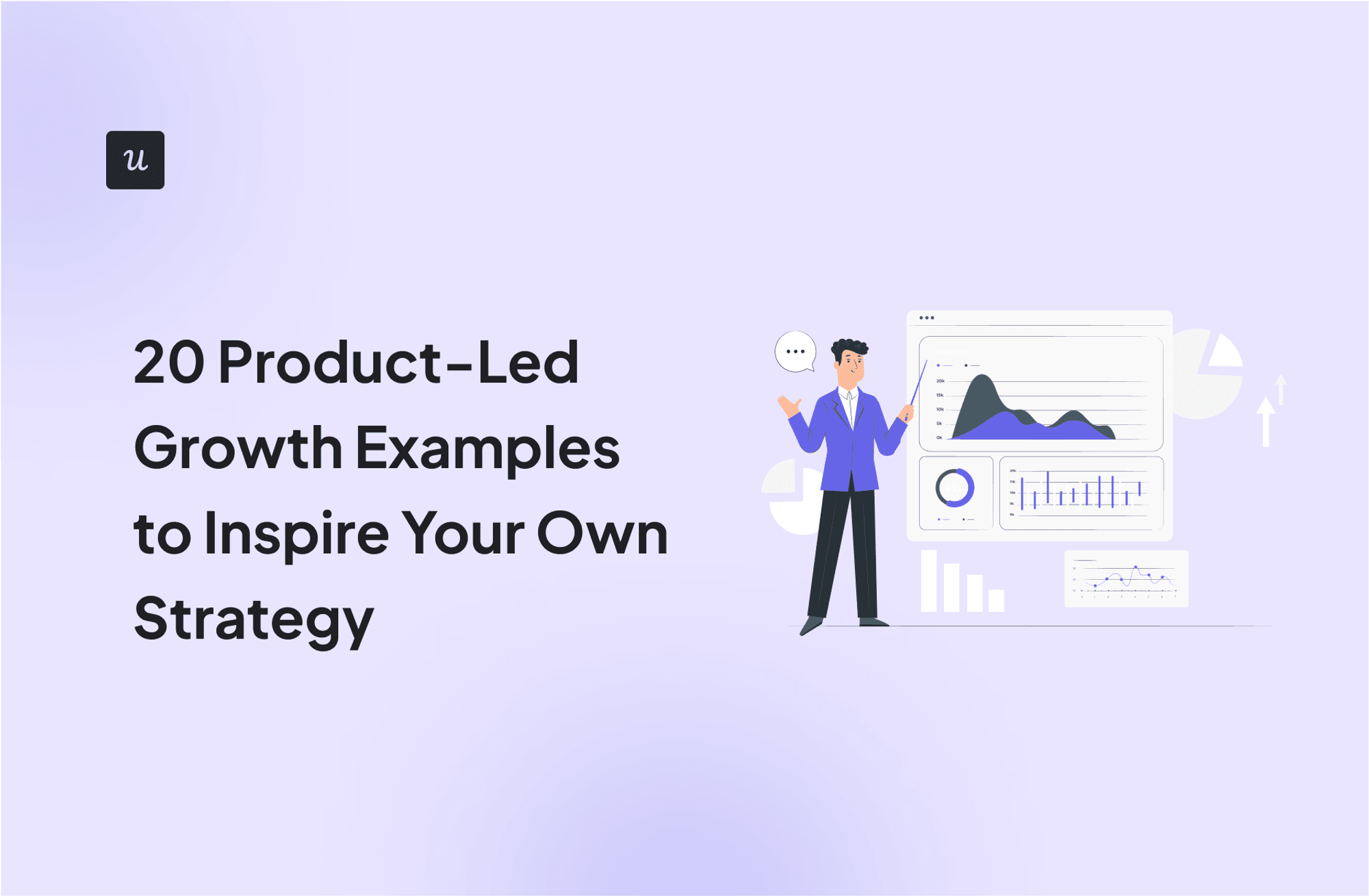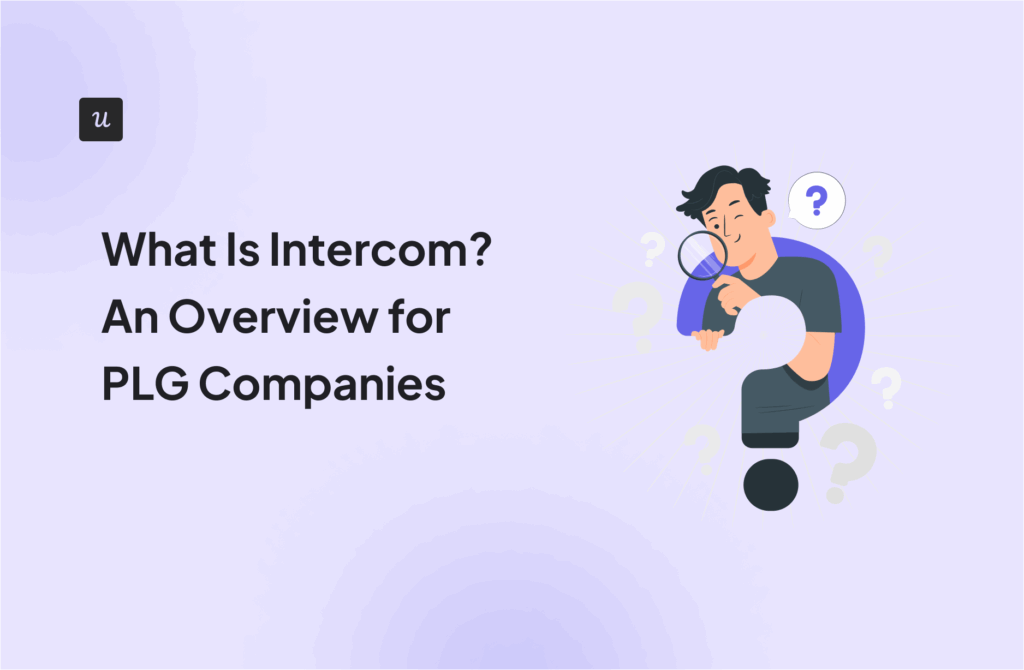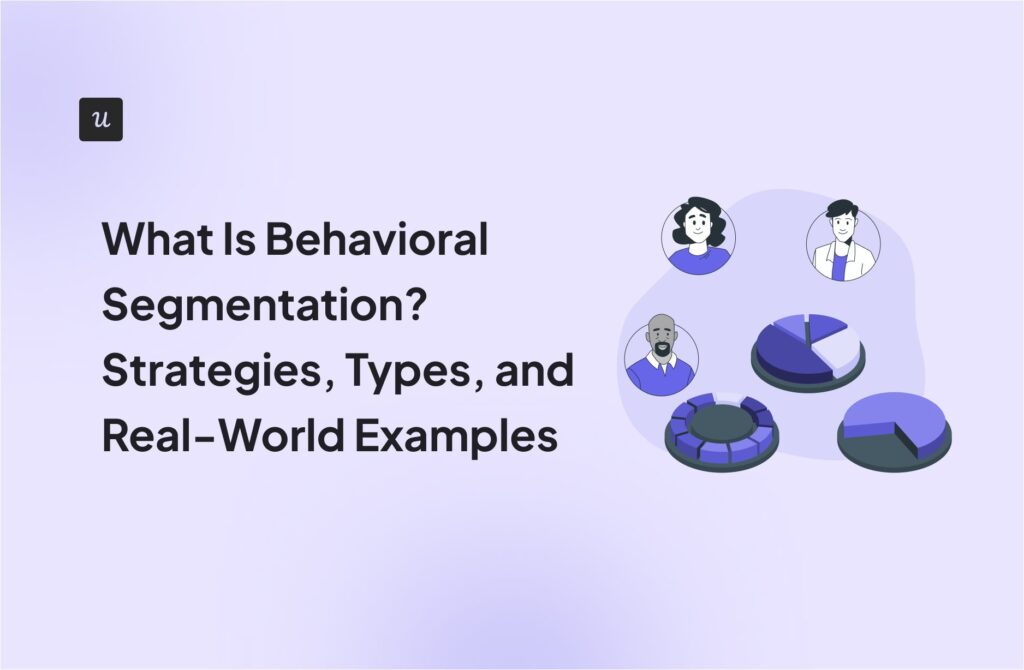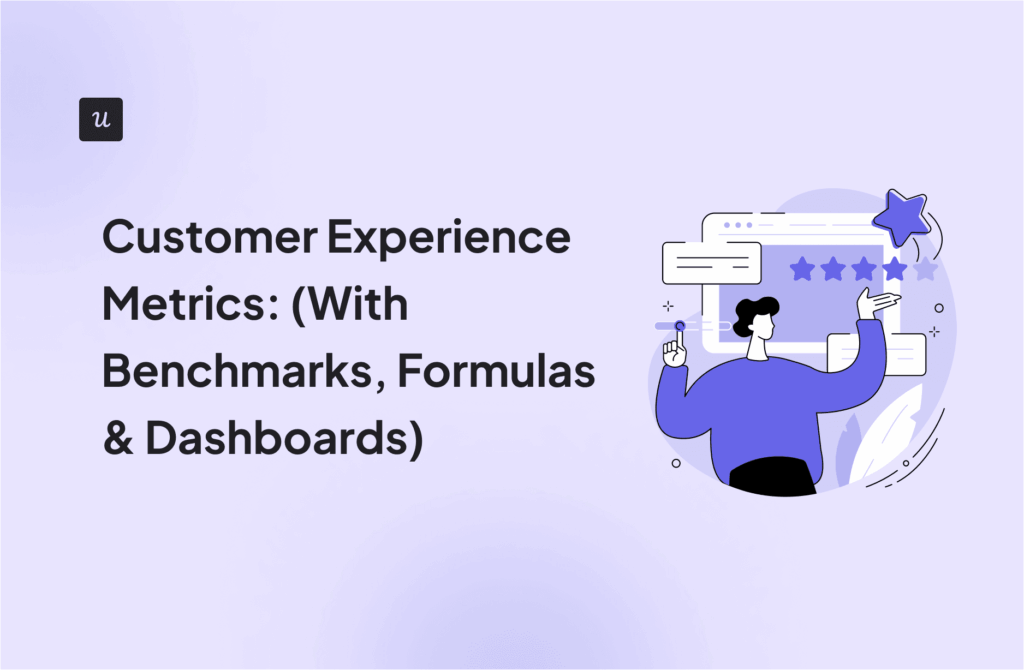
Learning from the success of product-led growth examples can be a game changer for your business.
The hype about product-led growth is real! More and more established businesses – even outside the SaaS industry – have transitioned to product-led growth.
This article examines the most important qualities of a product-led company, as well as examples of product-led companies that have cracked the code.
Try Userpilot Now
See Why 1,000+ Teams Choose Userpilot

Summary of product-led growth examples
- Product-led growth strategy is a business model where the product is the primary driver of engagement, retention, and acquisition.
- Some of the most important traits of a product-led growth model include customer-centric design, frictionless exploration, fast value, self-serve customer experience, network effect, and virality.
Examples of product-led growth companies that can help you achieve PLG success include:
- Hubspot offers a free grader tool to attract potential customers.
- Miro uses an optimized pricing model that caters to different market segments.
- Basecamp offers a free trial to generate product-qualified leads.
- Userpilot employs SSO options to remove friction from the signup process.
- Notion personalizes onboarding for new users to reduce time to value.
- JivoChat delays the email verification process to avoid user frustrations.
- Slack populates empty spaces with in-app messages that drive action.
- Kommunicate uses checklists to drive activation.
- Userpilot drives feature adoption with interactive walkthroughs.
- Calendly acquires customers through its viral loop.
- Dropbox reduces customer acquisition costs through referral programs.
- Userpilot drives product adoption through a self-serve resource center.
- Asana drives repeated product engagement through gamification.
- Hubspot offers extensive education to drive customer success.
- Buffer informs the product development process with a public roadmap.
- Figma implements secondary onboarding to retain existing customers.
- Loom creates FOMO through its reverse trial.
- Zapier maintains a tight feedback loop to build trust with users.
- Userpilot creates a digital community around its product to drive loyalty.
- Loom maximizes the customer’s lifetime value by triggering contextual upsell messages.
- Userpilot is one of the best product-led growth examples, with a strong digital community that can help you create a PLG strategy that works. Book a demo today!
What is a product-led growth strategy?
Product-led growth (PLG) strategy is an effort or model that focuses on using the product, more than anything else, to attract customers.
In this case, the product becomes the main vehicle for growth. It is a strategy that emphasizes the value of the product, drives product adoption, and aims to help the product sell itself to aid your growth.
Key traits of the product-led growth model
Some of the qualities that truly define a product-led growth company include:
- Customer-centric design and interface: Strong emphasis is placed on positive user experience to ensure users can easily understand and take advantage of the product’s features.
- Frictionless exploration: Elevating value over features is one of the main principles of product-led growth. After the initial product discovery, your product-led growth company must ensure customers realize the value of your product within a short window.
- Fast value: Product-led growth model focuses on making the signup process seamless. Whether it’s offering a freemium product, single sign-on, or account creation without paywalls, the goal is to deliver value first.
- Self-serve customer experience: SaaS companies that adopt the PLG strategy allow users to sign up and experience value from the product without the support of a sales team. The aim is to provide a self-serve product that has zero learning curve.
- Network effects: As more users adopt your product, its value increases dramatically. Existing users promote the product by themselves because of the value they derive, making it more attractive for new users.
- Virality: PLG companies focus on building product features to get customers raving and create a network effect. As the product makes a significant impact and gets raving fans telling their friends and colleagues about it, it gains widespread popularity.
20 product-led growth examples from top software companies
Nothing brings a topic to life more than seeing it in action.
These 20 product-led growth examples will help you anticipate and address users’ pain points while guiding them toward value discovery.
1. Hubspot offers a free grader tool to attract potential customers
Hubspot’s product-led growth strategy includes a free plan that gives users access to a grader tool that analyzes the most critical aspects of a website.
Hubspot also ensures the product is easy to use. All users need to do is enter their website domain name and personal email. The grader tool provides quick value by evaluating the website based on its performance, SEO, mobile traffic, and security.

2. Miro uses an optimized pricing model that caters to different market segments
Miro’s customer acquisition and PLG strategy involves using a freemium model and pricing structure that caters to the specific needs of different users.
From small teams to large enterprises, Miro offers solutions that address their challenges. For instance, enterprise clients have access to bespoke features, priority support, and higher levels of security.
As a result, Miro’s pricing model encourages viral growth. From freemium users who have access to key features like Unlimited Teammates, Core Functionality, and Basic Templates to enterprise users who receive priority support, Miro allows users to quickly experience value and encourages adoption.

3. Basecamp offers a free trial to generate product-qualified leads
Basecamp offers free trials that allow new users to experience the value of the product firsthand. Once prospects sign up for the 30-day free trial, Basecamp collects their emails and shares newsletters and educational content.
The educational guides are crafted to help project managers effectively manage and execute their projects using Basecamp.
At the end of the free trial, prospects who experienced value become paid users. But Basecamp doesn’t stop there. They offer a range of support tools, including tutorials and email support, to help users get the most out of the product.

4. Userpilot employs SSO options to remove friction from the signup process
Userpilot lets users get started with the platform as quickly as possible with a frictionless signup process.
If users spend too much time on complex signup forms, they could get frustrated and abandon the process. On the other hand, a single sign-on not only reduces signup time but helps users discover value faster.

5. Notion personalizes onboarding for new users to reduce time to value
Notion employs a personalized learning-by-doing onboarding process to quickly give users access to the product’s core values.
First off, Notion has preloaded templates for specific use cases (personal use vs school). When users land on the Getting Started page, they’ll find tooltips as they hover over certain elements. These tooltips provide clear instructions to help users explore the product on their own.
Notion also uses the information provided by users during signup to offer a personalized selection of templates. These templates instruct users and have accompanying demo data that visualizes the value users will derive from the product.

6. JivoChat delays the email verification process to avoid user frustrations
JivoChat is one of the best product-led growth examples. Its users don’t meet an email verification wall when they try to access the product, which reduces friction and accelerates time to value.
They allow users to use the product immediately and experience value. However, to ensure users still verify their emails, JoviChat uses a small banner as a reminder.

7. Slack populates empty spaces with in-app messages that drive action
Slack is a true self-serve product that guides users through in-app messages in empty spaces.
The visual hierarchy created by empty spaces directs users to the most important information, making Slack’s content more appealing.
The in-app education, coupled with the empty spaces makes it easy for users to understand how to navigate Slack.

8. Kommunicate uses checklists to drive activation
Kommunicate uses 5 ‘Aha!’ moments to show users the tasks they need to complete during their user journey toward other important milestones.
Kommunicate first draws user attention to the integration button – the initial ‘Aha!’ moment – then uses small cues to reveal features that users need to adopt before conversion.

9. Userpilot drives feature adoption with interactive walkthroughs
Userpilot uses contextual interactive walkthroughs to help users gain a better understanding of the platform and become power users.
They ensure users don’t feel intimidated by exposing them to the tool’s features one step at a time. Users can only move to the next step after completing an action.
For example, if the walkthrough tells a user to filter out the properties they want to exclude from their analysis, they cannot proceed to the next stage without completing the step.

10. Calendly acquires customers through its viral loop
Virality is central to Calendly’s product-led growth strategy.
Calendly can’t function with a single user. User A, for instance, can’t use Calendly on his/her own. For a successful meeting, User A must send their Calendly link to User B. At the end of the meeting, both users receive value.
This collaborative model lets Calendly create a viral loop. So, every time user A wants to schedule a meeting, they use and promote Calendly. As User B realizes how easy it is to schedule a meeting with Calendly, they will likely start sending others their link.
This growth loop ensures exponential growth for Calendly as the product walks the talk.

11. Dropbox reduces customer acquisition costs through referral programs
Dropbox is one of the top product-led growth companies with its low customer acquisition cost model.
The cloud storage company offers immediate, tangible value to its existing users for referring new users. Basic accounts on Dropbox can earn up to 16GB through referrals while Plus, Family, and Professional accounts can earn up to 32GB through referrals.
This user-friendly, product-led growth strategy helped Dropbox acquire millions of users within a short period.

12. Userpilot drives product adoption through a self-serve resource center
Userpilot’s self-serve help center empowers customers to solve their problems, ensuring customer satisfaction.
It goes beyond simply educating users on how to use the platform. It guides them through the user journey, helping them overcome pre-sale obstacles.
The self-serve resource center gives customers a feeling of control. It also aids conversion as users realize they can experience lots of value with the product.

13. Asana drives repeated product engagement through gamification
Asana’s gamification makes it one of the best product-led companies as it uses magical creatures to celebrate users’ achievements.
As users tick the boxes for completed tasks, a unicorn flies across the screen. This encourages repetition as users are encouraged to complete more tasks to get that dopamine boost again.

14. Hubspot offers extensive education to drive customer success
Hubspot’s product-led strategy is aimed at helping users learn how to use the Hubspot software to improve their inbound marketing efforts.
Users have access to how-to tutorials, boot camps, lessons, and courses that are self-paced and validate knowledge and expertise.
The instructors are industry specialists and the platform is free, ensuring users can enjoy immediate value once they sign up. Ultimately, this drives users to make use of the Hubspot platform for their inbound marketing needs.

15. Buffer informs the product development process with a public roadmap
Buffer’s product-led growth strategy involves sharing its truth with the public. The company’s public roadmap gives stakeholders a clear picture of products in progress and products they are considering.
This community-driven effort is a conversation starter and encourages user feedback. Buffer also makes collecting feedback easy; users can click on a prototype and leave their comments.
This gives Buffer users a feeling of control as they feel a part of the development process.

16. Figma implements secondary onboarding to retain existing customers
Figma prominently highlights new features or updates that have been added to the platform since the user’s last visit. But Figma doesn’t stop here.
Users receive a refresher on basic functionalities, including how to develop and organize. Figma’s secondary onboarding keeps existing users engaged, encourages a deep understanding of the product, and aids user retention.

17. Loom creates FOMO through its reverse trial
Loom uses its reverse trial freemium model to provide value immediately to users. It is a tactic Loom uses to convince users to switch to paid plans after experiencing the benefits of paid features.
Towards the end of the free trial, users receive notifications about the paid plans. At the end of the free trial, users receive a notification that they no longer have access to the advanced features.
Users also receive a ‘See Upgrade Options’ on their screen. The fear of missing out on the advanced features they already experienced will likely convince users to subscribe to a paid plan.

18. Zapier maintains a tight feedback loop to build trust with users
Zapier is one of the most successful product-led companies because commitment to quickly resolving user issues.
Developers at Zapier reach out to users, get their feedback, and turn it into actionable user insights to help design and product teams address issues before they become bigger problems.
Zapier also uses a series of centralized surveys to gauge user sentiment and resolve their challenges.

19. Userpilot creates a digital community around its product to drive loyalty
Userpilot has a digital community on Facebook to help product managers, customer success teams, and marketers grow their products.
This community provides value and drives loyalty as users can learn from real people, ask questions, and receive support when they need it.

20. Loom maximizes the customer’s lifetime value by triggering contextual upsell messages
Loom is a product-led company that gets it right with its timing and upsell messaging. Users have up to five minutes to record their screens and share video messages.
At the end of the five minutes, users receive a prompt to extend the time limit or improve the video quality.
Loom also provides a micro video to show users what the perfect video from Loom might look and sound like. These upselling messages are aimed at motivating users to subscribe to advanced plans.

Conclusion
Relying solely on a sales-led approach is outdated. The product-led growth strategy changes your perspective of your product and its end user. Focus on building a product that solves problems and resonates with your users.
The product-led growth examples discussed above can help you maintain focus on your users and discover strategies that drive long-term growth. Book a demo to learn how you can take your first steps toward becoming a product-led company.







